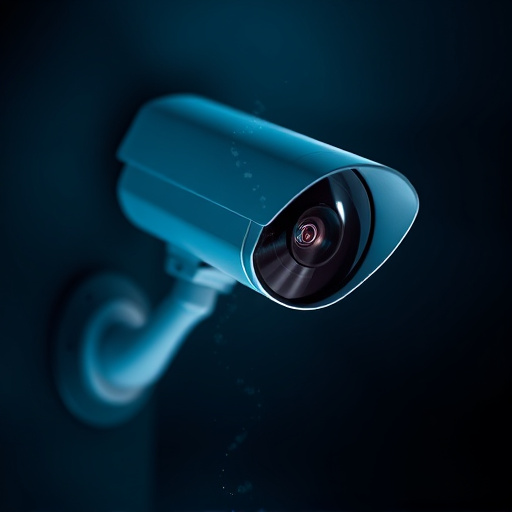Fake CCTV cameras with motion detection can enhance home and business security, but buying from reputable brands is vital to avoid low-quality counterfeits. While they act as deterrents, their effectiveness is limited. Correct mounting of these cameras is crucial for optimal performance; check brackets for signs of poor installation or makeshift adjustments. Consult a professional installer if uncertain to ensure comprehensive security.
“Enhance your home or business security with an unexpected tool—fake security camera mounting brackets. These decoys, designed to mimic real surveillance equipment, offer a unique approach to deterring potential intruders. In this article, we’ll explore the world of fake CCTV cameras with motion activation, their benefits and risks, and guide you through spotting poorly installed brackets. From understanding the technology to choosing the right types for your needs, discover how these innovative devices can add an extra layer of protection.”
- Understanding Fake Security Camera Brackets
- Common Types of Motion-Activated Cameras
- Benefits and Risks: Using Fake CCTV Cameras
- How to Spot and Avoid Poorly Installed Brackets
Understanding Fake Security Camera Brackets
Fake security camera mounting brackets are a prevalent concern in home and business security systems. These counterfeits often mimic legitimate CCTV camera components, specifically designed to attract unsuspecting buyers looking for affordable security solutions. While genuine brackets provide sturdy support for cameras, their fake counterparts may lack durability and critical security features.
When it comes to fake CCTV cameras with motion detection, the mounting brackets are integral to ensuring proper placement and functionality. Buyers should scrutinize the construction quality, materials used, and compatibility with their camera models. Opting for reputable brands specializing in security equipment can help avoid the pitfalls of low-quality, counterfeit products, thereby enhancing the overall effectiveness of your home or business security system.
Common Types of Motion-Activated Cameras
Motion-activated security cameras, often integrated into fake CCTV camera systems, are a popular choice for home and business owners seeking enhanced safety. These devices are designed to capture footage only when motion is detected, ensuring efficient storage space and reducing false alarms. Two primary types dominate the market: passive infrared (PIR) sensors and optical sensors.
Passive infrared cameras use heat-sensing technology to detect movement, making them effective in both well-lit and low-light conditions. Optical sensors, on the other hand, employ high-resolution image sensors to capture motion, offering superior clarity but requiring adequate illumination. With the rise of fake CCTV cameras, these motion-activated models provide a cost-effective way to deter potential intruders while adding a layer of visual security to any property.
Benefits and Risks: Using Fake CCTV Cameras
Using fake security camera mounting brackets and strategically placed non-functional “CCTV” cameras can offer significant benefits in terms of deterring potential criminals. The mere presence of these decoys can create an impression of enhanced surveillance, making would-be intruders think twice before attempting any malicious activities. This can be particularly effective in remote areas or for properties with limited physical security measures.
However, there are risks associated with relying solely on fake CCTV cameras. While they serve as a psychological deterrent, real criminals are adept at identifying fakes and may not be swayed by their presence. Moreover, depending on the quality of the decoys, they might not capture clear or usable footage in case of an actual break-in attempt. Therefore, it’s crucial to balance the cost and effectiveness of fake CCTV cameras with other security measures for comprehensive protection.
How to Spot and Avoid Poorly Installed Brackets
Spotting poorly installed mounting brackets for fake security cameras is crucial, especially when aiming to ensure their effectiveness and longevity. One clear sign is uneven or unlevel camera positioning, indicating a hasty installation job that could lead to damage or false readings. Scrutinize the mounting hardware; secure brackets should be sturdy, with all screws tightly fastened. Cheap imitations often lack this level of craftsmanship, using subpar materials that may rust or corrode over time, compromising the overall security setup.
Additionally, look for signs of makeshift adjustments. Brackets fitted with tape, wire, or other unconventional methods suggest a desperate attempt to place the camera in an ideal position. Authentic brackets are designed to accommodate various mounting angles and heights, ensuring optimal coverage. When in doubt, consult a professional installer who can provide insights into proper bracket placement, enhancing the overall security of your fake CCTV cameras with motion detection features.
Fake security camera mounting brackets, while seemingly harmless, can pose significant risks if not properly identified. By understanding the different types of motion-activated cameras and the potential benefits and drawbacks of using fake CCTV cameras, you can make informed decisions about your home or business security. Regularly inspecting camera installations and avoiding poorly executed bracket placements is key to maintaining an effective surveillance system. Remember, a secure environment starts with authentic equipment and clever navigation around common pitfalls like fake brackets. Stay vigilant and protect what matters most.
